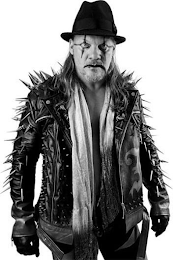When people think of trademarks, they often think of the usual source identifiers: brand names, product names, logos, and taglines. However, lots of other things can function as trademarks too. Take, for example, the famous fast-food clown, Ronald McDonald:
The rock band Kiss created trademarks out of their make-up:
The pro wrestler Sting followed suit by making a trademark out of his face paint:
Another pro wrestler Chris Jericho tried to take it even further by registering a trademark for his “Painmaker” face paint and costume:

Unfortunately for Jericho, his application was clotheslined by the Examining Attorney at the U.S. Patent and Trademark Office who found that the applied-for mark fails to function as a trademark and the applied-for mark does not match the specimens of record:





Jericho appealed, but the Trademark Trial and Appeal Board finished the application with an elbow drop:
The mark drawing contains the full figure design of the character, from the thighs up, showing both arms and gloved hands, whereas most of the specimens show no more of the individual than his head and chest. In each of the specimens that shows more than the head, the facial expression is different, with the character making expressions such as a snarl, teeth showing. Unlike the mark drawing, in none of the specimens is the character seen standing with his arms at his sides, both gloved hands visible, mouth closed, as if ready, but waiting patiently, for a fight. These differences between the mark drawing and Applicant’s specimens create distinct commercial impressions, such that the mark drawing is not a substantially exact representation of the applied-for mark as used, and Applicant has failed to provide a specimen showing use of that mark in commerce in connection with the identified services.
To paraphrase Ric Flair, to register the trademark, you gotta match the trademark. Woooo!